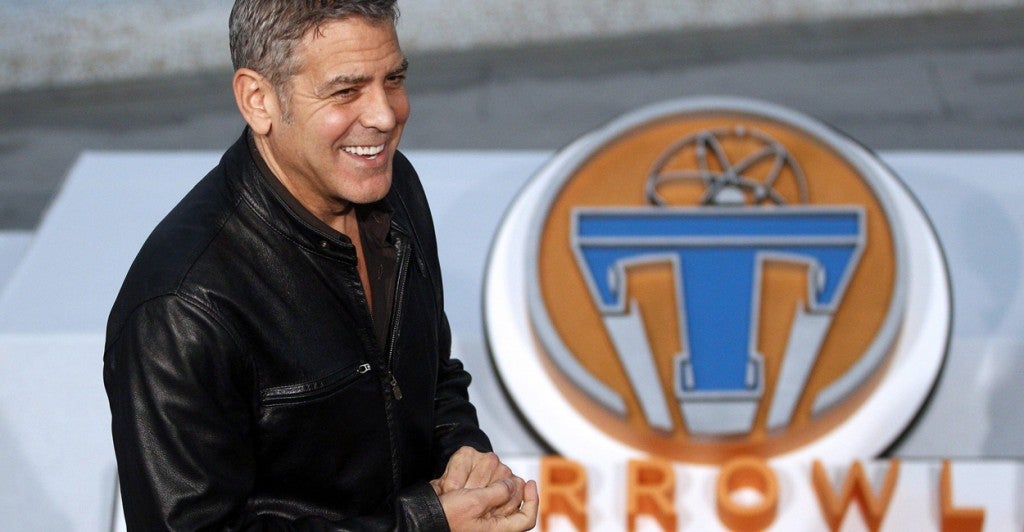A good science-fiction flick has to include futuristic technology—jet packs, soaring towers, robots who can fix anything, and, for George Clooney, windmills. That’s right—in Disney’s “Tomorrowland,” one of the harbingers of hope, innovation and the future is a medieval contraption that kills endangered birds and generates just enough energy to brew a cup of tea.
In a film about innovation and creativity, one could hope for futuristic technology that wows audiences rather than preaching left-leaning environmental policy. Unfortunately, “Tomorrowland” has entrenched itself in backward, liberal ideas.
Although an entertaining and family-friendly flick, Disney’s new film involves multiple themes that carry political bias. It even has received attacks from such liberal outlets as The Daily Beast, which called the movie “George Clooney’s Global Warming Shaming.” The outlet’s Kevin Fallon sums it up nicely: “It’s Al Gore by way of Captain Planet, Disney-approved.”
In “Tomorrowland,” human beings are giving in to despair and self-destruction, dooming civilization as we know it.
Despondent Frank Walker (George Clooney) begins the film talking about the bleak future caused by unstable governments, overpopulation and environmental collapse. Similarly, a typical school day for Casey Newton (Britt Robertson) involves listening to teachers preach doom and gloom. Talking points included “mutually assured destruction,” dystopia books “1984,” “Fahrenheit 451” and “Brave New World,” and: “The polar ice caps aren’t waiting to decide if we’ll accept climate change.”
The very technology which makes it possible for people to create the futuristic city “Tomorrowland” also gives them a glimpse into the future. And what do they see? Armageddon.
In a vision of the world less than two months from the present, Casey and Frank see death and destruction across the globe. From nuclear bombs to melting ice caps, from streets overcome by violence to cities swamped with water, everything everywhere is falling into chaos. “I’m afraid the world is ending. It is certain, and it is unavoidable,” says the villain, Governor Nix (Hugh Laurie).
Business and government do not respond to the world’s problems, explains Nix. “You would go to politicians and captains of industry, and how would you convince them? Data and facts?” So long as they can keep pumping oil and reaping profits, the villain says, these cultural figures will do nothing.
Nix has a plan to save mankind—broadcasting the fear of imminent destruction through a futuristic antenna that connects directly with people’s minds. If all the people on earth knew the triggers for the apocalypse, surely they would try to stop it.
Instead, “they sprinted toward it,” turning violence into video games and doom into an industry. “You face simultaneous epidemics of obesity and starvation, melting ice caps, and you won’t take the hint,” an exasperated Nix declares. “So yes, we saw the iceberg and we warned the Titanic, but you steered toward it full speed ahead.”
Here, Nix becomes the villain. Instead of trying to save the world, he resigns it to its fate.
Nix does commit another heinous crime, though—that of “deportation.” Rather than admit more and more people into his futuristic city, Nix closes the doors and erects a barrier. Our heroes have to resort to a spaceship designed by Thomas Edison just to break through, and when they do, Nix “deports” them again. A robot emphasizes that political word as it tells Frank “you’re being deported again.”
With Nix finally foiled, Frank and Casey begin the search for innovators to invite to “Tomorrowland.” With a twinkle in his eye, Frank exclaims, “Dreamers, we’re looking for dreamers.” Given George Clooney’s outspoken support for amnesty-based immigration reform, and immigrant advocates’ penchant to refer to themselves as “DREAMers” after the DREAM Act, his choice of words seems more than a coincidence.
The film concludes with hope as a group of reformers get their invitations to enter “Tomorrowland.” The multiracial group of recruits includes an African woman planter, a guitarist, a car designer, a painter, a teacher, and, of course, a windmill operator.
